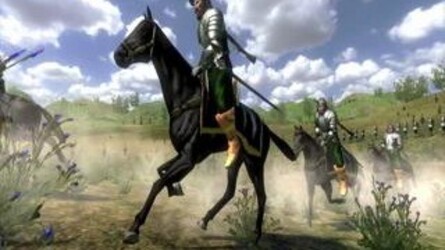
Introduction
Islam in the subcontinent emerged in the time of Prophet Muhammad himself through Arab traders. The second Muslim mission to enter Sindh for evaluating the possibility of conquest was headed by Hakim ibn Jabalah al-Abdi (حکیم ابن جبلہ العبدی) who was among the early Shias (1). He entered the area what today is part of Baluchistan province in
Pakistan in the year 644 CE and sent the following report to Caliph Usman:
“water is scarce, the fruits are poor and the robbers are bold; if a few troops are sent they will be slain, if many, they will starve” (2).
Since then, the Shia Muslims lived in the area what today is Pakistan, alongside Sunni Muslims and people from other religions. According to historical records of early Muslim elites and narrators of Hadith, ten among the seventy notable Muslims of the eighth and ninth centuries bearing a Sindhi surname (14.3% of all individuals) are Shi’ites (3). The incidents of violence against them were rare, and this medieval multi-culturalism explains why Shias are found everywhere in the Subcontinent, living side by side with people of other faiths.
If we look at the history, the first incident of Shia killing is the assassination of Abdullah Shah Ghazi, the great grandson of Imam Hassan, and his four hundred companions at the hands of the army of the Abbasid Caliph Mansoor 151 CE (4). The second such incident culminates in the overthrow of the Ismaili Shiite Empire in Multan in 1005 CE by Mahmud Ghaznavi and the destruction of Shiite mosques and populations. Three hundred years later, during the reign of Sultan Feroz Shah Tughlaq (1351-1388), religious manuscripts of Shia’s were burned in Delhi, they were humiliated and marched around the city, and their scholars were assassinated (5).
The Mughal Empire was exemplary in terms of religious harmony. Although during this period Sheikh Ahmad Sirhindi tried to create chaos by writing a book entitled “Radd-e-Rawafiz (ردِ روافض)”, the government spared no effort in fulfilling its responsibility to ensure the protection of the lives and property of the Shia citizens. In 1588, when the Shia scholar Mullah Ahmad Thathawi was assassinated in Lahore, Emperor Akbar arrested his murderer Mirza Faulad and executed him (6). Although Qazi Nurullah Shushtari, an eminent Shia jurist was flogged to death in 1610 CE during Jahangir’s reign, the cause of his death was more political rather sectarian. Jahangir was displeased with his father. Akbar wanted to nominate his grandson as his successor, because of Jahangir’s alcoholism. When Jahangir came to power by blinding Prince Khusrau, the nobles of Akbar’s court came under attack and thus Qazi Nurullah Shushtari was punished with public flogging, a humiliation which caused a heart attack and Shushtari died on spot (7). After Akbar, Jahangir and Shah Jahan too remained committed to peace and mutual co-existence in the empire. Hence, when Sheikh Ahmed Sirhindi tried to spread religious hatred against Hindus, he was imprisoned for one year. During the Mughal period, however, the major Shia persecution took place under Aurangzeb. Aurangzeb was a staunch religious scholar and in 1680 CE he overthrew the Shiite sultanates in the Deccan, destroyed the centers of learning there and banned commemoration of Muharram. The leader (داعیٔ مطلق) of the Dawoodi Bohras, Syedna Qutub Khan Qutubuddin, was martyred (8).
Three things stand out in the case of sectarian violence in the Medieval Ages. One is that no group from within the people took part in these killings and these were carried out by the royal armies. The second is the chronology of these events, one witnesses a gap of few hundred years between the incidents. And the third thing that distinguishes these events from the sectarianism that began after 1820 is that the events of the Medieval Age were confined to a particular area. Srinagar region of Kashmir is an exception to the otherwise tolerant medieval Subcontinent. There, Sunni Ulema and militia of the area and abroad carried out ten massacres against Shias, known as “Taraaj-e-Shia (تاراجِ شیعہ)”, in the years: 1548 CE, 1585 CE, 1635 CE, 1686 CE, 1719 CE, 1741 CE, 1762 CE, 1801 CE, 1830 CE and 1872 CE; during which the Shia neighborhood was plundered, people slaughtered, women raped, libraries burnt, corpses mutilated and their sacred sites destroyed (9).
In the Medieval Age, Shiites and Sunnis celebrated Muharram together. Pelsaert, a Dutch merchant who lived in Agra between (1620 – 1627 AD), gives an account of people commemorating Muharram:
“In commemoration of this tragedy, they wail all night for a period of ten days. The women recite lamentations and display grief. The men carry two decorated coffins on the main roads of the city with many lamps. Large crowds attend these ceremonies, with great cries of mourning and noise. The chief event is on the last night, when it seems as if a Pharoah had killed all the infants in one night. The outcry lasts till the first quarter of the day” (10).
In the eighteenth century, to support the Rohilla chiefs against the Nawabs of Awdh in the court of Delhi, Shah Waliullah (d. 1762 CE) and his son, Shah Abdul Aziz (d. 1824 CE), began to fan the flames of sectarian hatred (11). Shah Abdul Aziz wrote “Tohfa-e-Ithna-Asharia (تحفہ اثنا عشریہ )” against the Shia sect, to which the Shia scholar of Lucknow, Ayatollah Dildar Ali Naqvi, responded. In one of his letters, Shah Abdul Aziz forbade Sunnis to marry Shiites, take the initiative in greeting them and eat their food (12). But he had great respect for Ahlulbayt and he wrote a booklet in favor of commemoration of martyrdom of Imam Hasan and Imam Husayn, called “Sir-ush-Shahadatain (سر الشہادتین)”.
Syed Ahmad Barelvi’s Anti-Shi’ism
The 19th century began with sectarian violence. In 1802, the Wahhabi army of Najd area in present day Saudi Arabia attacked the holy cities of Karbala and Najaf and destroyed and looted the shrines of the Imams there, killing 5,000 Shia Muslims. In 1804, this army also attacked Medina and disregarded the Holy Shrine of the Prophet Muhammad (PBUH), because they considered paying homage to these Shrines a form of idol worship (13). This tragedy inspired Syed Ahmed Barelvi (d. 1831) and Shah Ismail Dehlavi (d. 1831), who belonged to Shah Waliullah’s school of thought in the subcontinent. They, with hundreds of their devotees, traveled across towns of Awdh, Bihar and Bengal from 1818 to 1821 and attacked imambargahs (Shia places of gathering). Professor Barbara Metcalf writes:
“A second group of Abuses Syed Ahmad held were those that originated from Shi’i influence. He particularly urged Muslims to give up the keeping of ta’ziyahs. The replicas of the tombs of the martyrs of Karbala taken in procession during the mourning ceremony of Muharram. Muhammad Isma’il wrote,
‘A true believer should regard the breaking of a tazia by force to be as virtuous an action as destroying idols. If he cannot break them himself, let him order others to do so. If this even be out of his power, let him at least detest and abhor them with his whole heart and soul’.
Sayyid Ahmad himself is said, no doubt with considerable exaggeration, to have torn down thousands of imambaras, the building that house the taziyahs” (14).
In 1826 CE, they succeeded in establishing a Talibanesque state in the Pakhtun areas. It was not a government that would improve human life, eradicate poverty and disease by providing human capital with an atmosphere of stability and freedom. At that time, the industrial and medical revolution had begun in the West, which later took over the markets of the world, while Muslim society had to deal with such reactionary forces. In Pashtun areas, they combined Hanafi jurisprudence with Wahhabi beliefs. In addition to attacking Pakhtun culture and traditions, they ordered that every girl must get married after having her first menstrual periods. Syed Ahmed’s companions would flog anyone who could not attend congregational prayers. He forcibly married “Mujahideen” (Soldiers of his militia) with local girls. When the people in the Pakhtun areas gradually turned against him, Shah Ismail Dehlavi said:
“Hence, obedience to his excellency Syed Ahmed is obligatory on all Muslims. Whoever does not submit to the leadership of his Excellency or rejects him after believing him, is an apostate and mischievous, and killing him is part of the jihad as is the killing of the disbelievers. Therefore, the appropriate response to opponents is that of the sword and not the pen” (15).
Not surprisingly, the terrorists of the Taliban and ISIS today have a striking resemblance to their ideas. Traditional Sunni clerics in Peshawar issued fatwas against them. Finally, in 1831, Syed Ahmad Barelvi and Shah Ismail escaped and were killed by the Sikhs at Balakot with the help of local Pakhtuns (15)
Although Syed Ahmed Barelvi had been assassinated, the fire of sectarianism was burning in some places. See the March 22, 1840 report of the newspaper “Dehli Urdu Akhbar” on such controversies.
“It was heard that despite the fact that it was the day of Holi in the 10th of Muharram, the events passed peacefully because of formidable management by the District Magistrate. There was no rioting. Baring the place of Ms. Ameer Begum, Widow of Shamsuddin Khan, where some Sunni had planned to attack the Muharram gathering and taziyah procession, but the word reached to Magistrate. It is said that when his excellency woke up to patrol at night before the event, he visited the police station and strongly urged the warden and police men on duty that no outsider should be allowed in the vicinity. Hence decent arrangements were made and not a single word of dispute was heard” (16).
Those days the word ‘Wahhabi’ was used for the followers of Syed Ahmad Barelvi and Shah Ismail Dehlvi. Later, this school of thought split into two branches: the Deobandis and the Ahl-e-Hadith, with the Deobandi ideology being more close to Syed Ahmad’s cult. Some Gazetteers compiled during the colonial period insight into the presence of Wahhabis in the areas of present-day Pakistan. The following table presents the relevant data from these Gazetteers.
The demography of Wahabis according to the Gazetteers of British India
Year District Wahabi Presence Reference
98–1897 Peshawar 0.01% Page-110
84 –1883 Shahpur 0.07% Page-40
84 –1883 Jhang 0.02% Page-50
94 – 189 3Lahore 0.03% Page-94
While these figures show the active proselytization of the ideology of Syed Ahmad Barelvi and Shah Ismail Dehlvi in that age, the number shown here under-estimate the real demography because the Wahhabis used to hide their identity, as the Lahore gazetteer notes:
“The Wahhabis are returned very short of their real number; probably many Muhammadans who were Wahhabis thought it safer not to reveal themselves as such” (17).
Maulvi Noor Ahmad Chishti, a Sunni scholar, also reports the presence of Wahhabis in his book “Yadgar-e-Chishti” published in 1859:
“Another sect has now emerged among the Muslims and is called the Wahhabi sect. I see in this age that most of the scholars are attracted to this. I seek refuge in Allah! May God correct their beliefs” (18).
The following excerpts from this book also show that there were followers of Syed Ahmed Barelvi in the urban middle class of Punjab and they had started attacking Shia mourners:
“And in every bazaar, spectators gather to watch (the Zuljinnah – the horse of Husayn). Rose water is sprinkled on him from all sides but some people laugh at the mourners due to prejudice. Some people chant “Madad Char Yaar” which may sometimes result in bloodshed. So, when Major Karkar Bahadur was the Deputy Commissioner in Lahore, there was a lot of fighting between the Sunnis and Shias and many people got injured. Since then the Deputy commissioner of police, District police officer, Sub officer, some Company’s men and one army officer accompany the horse to protect the Shia people but still they would not stop” (19).
Kanhiya Lal in his book “Tareekh-e-Lahore (History of Lahore)”, published in 1884, writes:
“In 1849, this house (Karbala Gamay Shah) was destroyed. On the 10th of Muharram, when Zuljinnah (the horse of Husayn) came out, there was a fierce clash between the Shia and Sunni people near Shah Aalmi Gate. On that day, the Sunni nation demolished buildings inside the enclosure. The minarets of the shrines were also demolished and the water well was mounded with bricks. Gamay shah was beaten so badly that he fainted. Finally, when the Deputy Commissioner Edward summoned a contingent of cavalry from Anarkali cantonment, the people dispersed. And those who were arrested were also given some punishment” (20).
Modern Anti-Shi’ism
It is important to note that in the beginning of twentieth century, the anti-Shia groups were small in numbers and had little influence. Mushirul Hasan says:
“Shia-Sunni relations were not structured around sectarian lines. Some people nursed sectarian prejudices, but most consciously resisted attempts to create fissures in the broadly unified and consensual model of social and cultural living. Regardless of the polemics of the Ulama and the itinerant preachers, bonds of friendship and understanding remained intact because Shias and Sunnis of all classes shared a language, literature and a cultural heritage. That is probably why Sharar(عبد الحلیم شرر) observed, though in an exaggerated vein, that no one in Lucknow ever noticed who was a Sunni and who a Shia” (21).
While this is still true for majority of the Muslim population, the problem grew in size as modern technology (e.g. printing press, telegraph and railways) came to India. The last decades of Nineteenth century saw major social changes. Barbara Metcalf and Thomas Metcalf describe those changes as follows:
“The decades that spanned the turn of the twentieth century marked an apogee of the British imperial system, whose institutional framework had been set after 1857. At the same time, these decades were marked by a rich profusion and elaboration of voluntary organizations; a surge in publication or newspaper, pamphlets and posters; and the writing of fiction and poetry as well as political, philosophical, and historical non-fiction. With this activity, a new level of public life emerged, ranging from meetings and processions to politicized street theatre, riots and terrorism” (22).
This change helped the followers of Syed Ahmad Barelvi in increasing their influence. Mushirul Hasan says:
“Shia-Sunni disturbances were sparked off in Lucknow in the 1880s and 1890s and in 1907-8. The feeling of tension between the Sunnis and Shias of Lucknow has reached its climax, reported the Gauhar-i-Shahwar in April 1907. Allahabad, Banaras, and Jaunpur witnessed widespread violence. What began with small-scale skirmishes in the last quarter of the nineteenth-century, many of which went unnoticed in official despatches because of their listing in the category of «Native Societies and Religious and Social Matters» in the Selections from the Native Newspapers, escalated into bloody feuds involving scores of people and turning Lucknow and its adjoining districts into a cauldron of sectarian animus” (21).
He continues:
“It turned violent in May-June 1937, when frenzied mobs in Lucknow and Ghazipur went on a rampage. Trouble in Ghazipur was instigated by a party of Sunnis from Jaunpur. Enraged mobs burnt and looted property. They killed at will. The summer of discontent rumbled on as sectarian strife, hitherto dormant, turned into a common occurrence in the daily lives of Lucknawis. There was more trouble during the next two years, fuelled by a government-appointed committee’s ruling against Madh-e Sahaba in Lucknow. All hell broke loose. Husain Ahmad Madani (1879-1957),
principal of the renowned seminary at Deoband along with other Jam’iyat al-‘Ulama’ leaders, jumped into the fray. He advocated civil disobedience. Thousands paid heed to his call and courted arrest. Though a fervent advocate of secular nationalism and a principled critic of the «two-nation theory», he stirred sectarian passions unabashedly. He spoke at a public meeting in Lucknow on 17 March 1938 sharing the platform with the firebrand head of the Dar al-Muballighin, Maulvi ‘Abdul Shakoor, and Maulana Zafarul Mulk, chief exponent of Madh-e Sahaba in Lucknow” (21).
Already in 1940, a bomb was thrown on a procession. J. N. Hollister reports on the security situation during Muharram on 1940:
“Conflicts between Sunnis and Shias at Muharram are not infrequent. Processions in the cities are accompanied by police along fixed lines of March. The following quotations from a single newspaper are not usual. They indicate what might happen if government did not keep the situation under control:
‘adequate measures avert incidents’, ‘Muharram passed off peacefully’, ‘All shops remained closed in . . . in order to avoid incidents’, ‘Several women offered satyagraha in front of the final procession . . . about twenty miles from Allahabad. They object to the passing of the procession through their fields’, ‘the police took great precautions to prevent a breach of the peace’, ‘as a sequel to the cane charge by the police on a Mehndi procession the Moslems . . . did not celebrate the Muharram today. No ta’zia processions were taken out . . . Business was transacted as usual in the Hindu localities’, ‘Bomb thrown on procession’.
Not all of these disturbances spring from sectarian differences, but those differences actuate many fracases. Birdwood says that, in Bombay, where the first four days of Muharram are likely to be devoted to visiting each other’s tabut khanas, women and children as well as men are admitted, and members of other communities – only the Sunnies are denied ‘simply as a police precaution” (23).
Similar incidents were occurring in Tirah valley in the tribal areas bordering Afghanistan. Ghani Khan reports:
“Heaven and houris were promised to those who killed the Shias. The Afridi’s listened. The gold offered and the houris promised proved too much for them. They picked up their rifles and went in search of Heaven. Then followed a most frightful destruction not only of the Shias but of cattle and trees as well. Valleys where the Shias lived were laid desolate – millions of fruit trees, hundreds of years old Chinar and almond plantations were sawn down. The Shias were too broken and distracted to come to Amanullah’s help” (24).
Mushirul Hasan analyzes this modern anti-Shi’ism as follows:
“Sectarianism in the 1930s, however, was of a distinct nature. The debates then were no longer restricted to the “Khilafat”. Nor were the age-old controversies confined to the learned and holy men on both sides. The energy released during the decade, spurred by newly-started organizations wedded to separate Sunni and Shia world views, substantially altered the structure of social relations. They imposed severe strains on the overall consensus, achieved through long-standing social, cultural and economic networks. People were encouraged to transgress traditional codes of conduct and behavior and organize themselves as a separate entity in opposition to the «Other». The emotional charge deepened the intensity and depth of sectarian conflicts, competition and rivalries” (21).
During the Pakistan movement, there were attempts by Congress-allied clerics to disqualify Jinnah for political leadership on the basis of his Shia faith. But these clerics failed to win the support of Muslims because of their weak political program and history of folly in the ‘Khilafat movement’. The Muslim League succeeded in convincing the Muslim masses that by inciting Shia-Sunni riots, the Congress aims to push back the issue of constitutional rights of Muslims. During the Second World War, the anti-Shia violence eased considerably as the debates concerning future of India after independence attracted everyone’s mind. However, in 1944, a Deobandi organization solely focused on attacking the Shias by the name of Tanzeem-e-Ahl-e-Sunnat (تنظیمِ اہلِ سنت), was launched in the city of Amritsar, now in Indian Punjab (25).
After the formation of Pakistan in 1947, the students of Maulana Hussain Ahmad Madani, the architect of the Shia-Sunni riots in Lucknow, migrated to Pakistan and started campaigning from city to city. Deobandi clerics, Maulana Noorul Hassan Bukhari, Maulana Abdul Sattar Taunsui, Maulana Sarfraz Gakharvi, Maulana Dost Muhammad Qureshi, Maulana Abdul Haq Haqqani and Maulana Mufti Mahmood, were playing the leading role. There were attacks on mourners in 1949 in Narowal. In the 1951 Punjab Assembly elections, a campaign was launched against Shia candidates on sectarian grounds and they were declared infidels. In 1955, mourning processions and ‘imambargahs’ were attacked at 25 places in Punjab in which hundreds of people were injured. In the same year, a Sunni cleric in Karachi spread a rumor that Shiites slaughter a Sunni child every year and add his meat into the food they serve on Muharram. As a result, a Balti imambargah in Karachi was attacked and twelve people were severely injured (26).
In 1957, three mourners were killed during an attack on a Muharram procession in Sitpur village of Muzaffargarh district. A judicial commission was set up by the government and five terrorists involved in the incident were sentenced to death. In the same year, one person was killed and three others were seriously injured when stones were hurled at a mourning procession in Ahmadpur Sharqi. In June 1958, Agha Mohsin, a Shia cleric, was assassinated in Bhakkar. The killer said in a confessional statement that Maulana Noorul Hassan Bukhari’s speech had incited him to commit the crime in which the killer of Shiites was compared to Ghazi Ilm-ud-din and was guaranteed paradise. Maulana Noorul Hassan Bukhari was not punished, which encouraged riotous scholars (27).
The Thehri Massacre
The year 1963 proved to be the bloodiest in the early history of Pakistan. On June 3, 1963, a mourning procession at Bhati Gate, Lahore, was attacked with stones and knives, killing two mourners and injuring about a hundred. Mourners were also attacked in Narowal, Chiniot and Quetta too. The worst terrorist attack took place in the village of Thehri in Khairpur District of Sindh, known as “Thehri Massacre”. According to official figures, 120 mourners were slaughtered on Ashura with axes and swords. On June 16, Deobandi leaders Mufti Mahmood, Shorash Kashmiri and Maulana Ghulam Ghaus Hazarawi of Jamiat Ulema-e-Islam (JUI) held a rally in Lahore in support of the massacre, blaming the victims for the massacre and calling for a ban on Muharram processions (28).
Sipah-e-Sahaba
The most important development of the sixties was the wave of socialism which reduced the political influence of the Ulema. That is why the period from 1965 to 1977 saw a significant reduction in anti-Shia violence. When General Zia-ul-Haq, inspired by the ideology of Jamaat-e-Islami and Muslim Brotherhood, imposed martial law in July 1977, the following Muharram on February 1978, 8 Shias were killed in Lahore and 14 in Karachi (29). Such incidents increased during the tenure of General Zia and beyond. Tanzim-e-Ahle Sunnat was revived with a new name, Sipah-e-Sahaba, and anti-Shi’ism was theorized as a political ideology with this-worldly goals, which wants to see Pakistan become a fascist Deobandi utopia (30). In the 1990s, Shia mosques became killing fields. Kalashnikovs and grenades were readily available thanks to Afghan Taliban.
After the US-led invasion of Afghanistan in September 2001, Mufti Nizamuddin Shamzai of Jamia Banuri in Karachi issued a fatwa of Jihad against the state of Pakistan. According to the fatwa, all forms of violence were justified. To follow his orders, a terrorist group called the Tehreek-e-Taliban Pakistan (TTP) emerged in the tribal areas and anti-Shia violence escalated into suicide attacks. Pakistan’s streets and bazaars were engulfed in flames and bathed in blood (31). One pamphlet distributed by the militant wing of Sipah-e-Sahaba reads:
“All Shia are worthy of killing. We will rid Pakistan of unclean people. Pakistan means “land of the pure” and the Shia have no right to live in this country. We have the edict and signatures of revered scholars, declaring the Shia infidels. Just as our fighters have waged a successful jihad against the Shia Hazara in Afghanistan, our mission in Pakistan is the abolition of this impure sect and its followers from every city, every village, and every nook and corner of Pakistan.
As in the past, our successful jihad against the Hazara in Pakistan and, in particular, in Quetta is ongoing and will continue in the future. We will make Pakistan the graveyard of the Shia Hazara and their houses will be destroyed by bombs and suicide-bombers. We will only rest when we will be able to fly the flag of true Islam on this land of the pure. Jihad against the Shia Hazara has now become our duty” (32).
Conclusion:
Popular anti-Shi’ism in the subcontinent began in 1820, and Muharram 2020 marks the 200th anniversary of the beginning of this organized sectarian terrorism. It is time to analyze the history of 200-years of local sectarian terrorism and to understand the political vision of the followers of Syed Ahmed Barelvi, their desire to bring about an Islamic revolution and create a genocidal utopia in Pakistan which has no space for dissent. Calling it a Saudi-Iranian proxy war or an Indian or American conspiracy to destabilize Pakistan is a naked denial of facts. To say that this is a conspiracy of external forces is barking up the wrong tree. Fuchs says:
“Deobandi networks that push for an exclusion of Shi‘is from the public deliberation of Pakistan’s (political) future do not rely on Saudi ideological input or funding. While they are happy to incorporate aspects of Saudi-sponsored Salafi arguments, they transcend the mere focus on theological point-scoring. Anti-Shi‘i sectarianism in Pakistan is thus a predominantly local affair instead of yet another manifestation of an Iranian-Saudi proxy war on South Asian soil” (30).
Abbas Zaidi says that both the state-owned and the private media houses in Pakistan have adopted a policy of justification and denial, when it comes to violence against the Shia community. He says:
“the media reports Shia killing in one of three ways: denial, obfuscation, and justification. By denial I mean that the media explicitly or implicitly claims that not Shias but “people”, “men”, “pilgrims”, or ethnic “Hazaras” are being killed. This happens when the media either does not report Shia killing at all or deliberately hides Shia victims’ sectarian identity. By obfuscation I mean that the media portrays Shia killing in terms of a Shia–Sunni binary in which both sects are shown to be equally involved in violence. By justification I mean that the media portrays the Shias as heretics, blasphemers, and agents provocateurs operating on behalf of foreign powers and thus deserving of violence being done to them” (33).
Khaled Ahmed thinks that there is a ‘sense of shame’ among the Sunni owners of the media houses that stops them from openly talking about the problem (34)
There is a need to change this mindset by recognizing the local status of the problem, taking responsibility for its solution and informing future generations of the true history. We have to learn to coexist, it takes effort to learn that. A bright example to follow is the secularism of sulh-i-kul (peace with all), a policy pioneered by the great sixteenth century Muslim Emperor, Jalaluddin Mohammad Akbar.
References:
1. Derryl N. Maclean, “Religion and Society in Arab Sind”, p. 126, Brill, (1989).
2. Stanley Wolpert, “A New History of India”, p. 106, Oxford (2004).
3. Derryl N. Maclean, “Religion and Society in Arab Sind”, p. 127, Brill, (1989).
4. Derryl N. Maclean, “Religion and Society in Arab Sind”, pp. 127–130, BRILL, (1989).
5. S. A. N. Rezavi, “The Shia Muslims”, in History of Science, Philosophy and Culture in Indian Civilization, Vol. 2, Part. 2: “Religious Movements and Institutions in Medieval India”, Chapter 13, Oxford University Press (2006).
6. S. A. A. Rizvi, “A Socio-Intellectual History of Isna Ashari Shi’is in India”, Vol. I, pp. 233–234, Mar’ifat Publishing House, Canberra (1986).
7. Sajjad Rizvi, “Shi’i Polemics at the Mughal Court: The Case of Qazi Nurullah Shushtari”, Studies in People’s History, 4, 1, pp. 53–67, SAGE (2017).
8. A. Truschke, Aurangzeb The Man and the Myth, ch. 5, Penguin Books, 2017.
9. Zaheen, “Shi’ism in Kashmir, 1477–1885”, International Research Journal of Social Sciences, Vol. 4(4), 74–80, April (2015).
10. S. A. A. Rizvi, “A Socio-Intellectual History of Isna Ashari Shi’is in India”, Vol. 2, p. 298, Mar’ifat Publishing House, Canberra (1986).
11. S. A. A. Rizvi, “Shah Waliullah and His Times”, p. 227, Ma’rifat Publishing House, Canberra, (1980).
12. S. A. A. Rizvi, “Shah Abd al-Aziz”, pp. 207 – 208, Ma’rifat Publishing House, Canberra, (1982).
13. Charles Allen, “God’s Terrorists: The Wahhabi Cult and the Hidden Roots of Modern Jihad”, pp. 63–64, Abacus, (2006).
14. B. Metcalf, “Islamic revival in British India: Deoband, 1860–1900”, p. 58, Princeton University Press (1982).
15. Dr. Mubarak Ali, “Syed Ahmed Barelvi and his Jihad movement”, Almiyah-e-Tarikh, Chapter 11, pp. 107–121, Fiction House, Lahore (2012).
16. Dehli Urdu Akhbar, 22 March 1840, edited by: Khawaja Ahmad Farouqi, Jamal Printing Press, Delhi, (1972).
17. Gazetteer of Lahore District, p. 94, (1894).
18. Maulvi Noor Muhammad Chishti, “Yadgar-e-Chishti”, p. 152, Majlis-i-Taraqi-i-Urdu Adab, Lahore.
19. Maulvi Noor Muhammad Chishti, “Yadgar-e-Chishti”, p. 237, Majlis-i-Taraqi-i-Urdu Adab, Lahore.
20. Kanhaiya Lal, Tareekh-i-Lahore, p. 305, Victoria Press, Lahore (1884).
21. Mushirul Hasan, “Traditional Rites and Contested Meanings: Sectarian Strife in Colonial Lucknow”, Economic and Political Weekly, Vol. 31, No. 9, pp. 543 – 550, (1996).
22. B. D. Metcalf and T. R. Metcalf, “A Concise History of Modern India”, p. 123, Cambridge (2012).
23. J. N. Hollister, “The Shi’a of India”, p. 178, Luzac and Co, London, (1953).
24. Ghani Khan, “The Pathan”, ch. 10.
25. A. Rieck, “The Shias of Pakistan”, p. 47, Oxford University Press, (2015).
26. Ibid, pp. 88-90.
27. Ibid, pp. 94-97.
28. Ibid, pp. 110-111.
29. Kunwar Khuldune Shahid, “Shiaphobia”, The Friday Times, April 04-10 , 2014 – Vol. XXVI, No. 08.
30. Fuchs, S. W., “Faded networks: the overestimated Saudi Legacy of anti–Shi’i sectarianism in Pakistan”, Global Discourses, vol. 9, no. 4, 703–715, (2019).
31. C. Christine Fair, “Explaining Support for Sectarian Terrorism in Pakistan: Piety, Maslak and Sharia”, Religions, vol. 6, pp. 1137–1167, (2015).
32. Abbas Zaidi, “The Shias of Pakistan: Mapping an Altruistic Genocide”, Faith-Based Violence and Deobandi Militancy in Pakistan, eds: J. Syed et al., Palgrave (2016).
33. Abbas Zaidi, “Covering Faith-Based Violence: Structure and Semantics of News Reporting in Pakistan”, in: J. Syed et al. (eds.), Faith-Based Violence and Deobandi Militancy in Pakistan, Palgrave Macmillan, (2016).
34. Khaled Ahmed, “Sectarian War”, pp. xxv – xxvi, Oxford University Press, (2015).


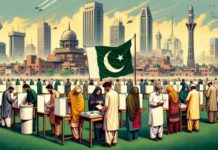
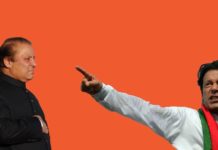
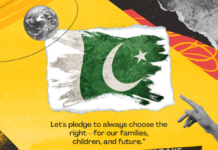
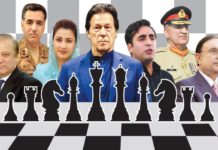
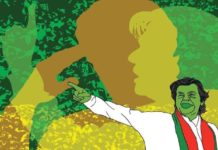
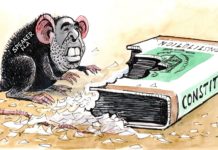
A very informative & well researched article. Was it part of some academic research work? Please do share if you have any more stuff. Thanks
Comments are closed.